I’m interested in both photography and languages, so I recently started thinking about photography-related words in languages other than English. Words other than bokeh, I mean, about which plenty has been written already. The five words which I talk about in this post may not have the viral potential of bokeh, but I think they offer interesting insights into other cultures, and suggest new ways to think and talk about photography.
Japanese: シャッターチャンス (shatta-chansu)
Photographers, in my experience, can be a tad self-important. Not all, of course, and er… not you! I mean other photographers.
“Sometimes I do get to places just when God’s ready to have somebody click the shutter,” said Ansel Adams – unironically, as far as I can tell. Likewise with Henri Cartier-Bresson’s famous phrase, le moment décisif (the decisive moment). Despite its historical significance, it feels a bit presumptuous – the idea that there is one right moment to press the shutter. Miss that moment, and you regret it forevermore.
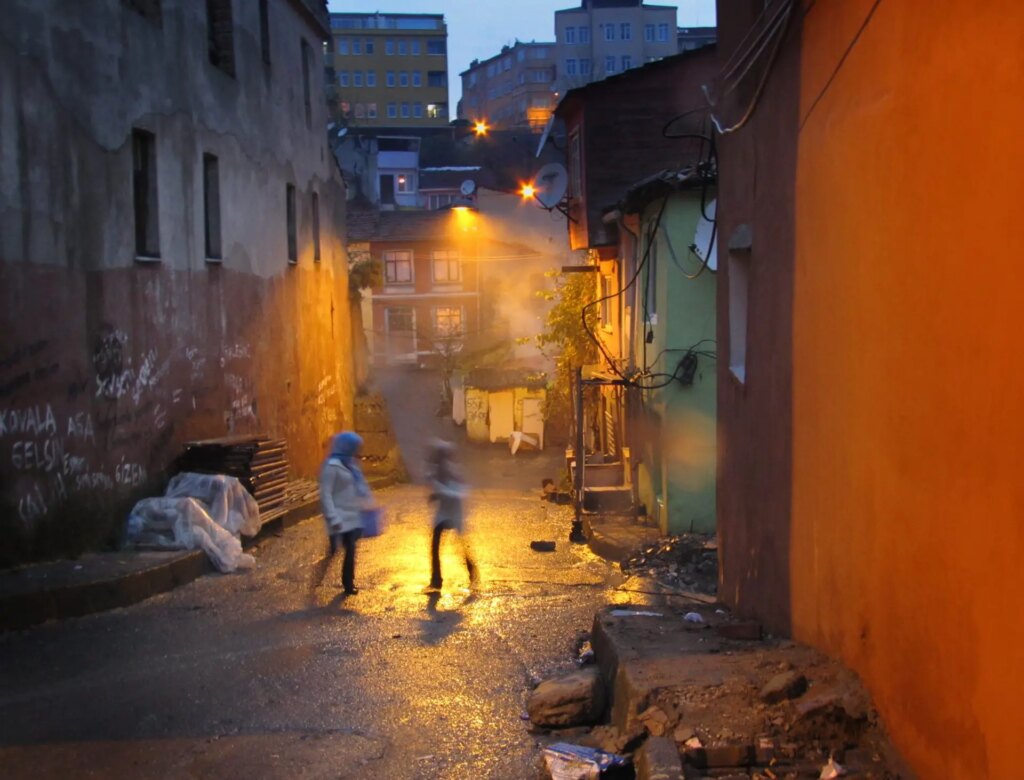
I prefer the Japanese term shatta-chansu. The phrase is in fact borrowed from English (“shutter chance”), but it’s not really used by English speakers. Isn’t it nice, though? There’s a lightness to it – so much less portentous than “the decisive moment”.
Just a chance. Act on it if you can, but if you miss, that’s okay too. It reminds me of South-African photographer Santu Mofokeng’s refreshing admission: “I do not get a hernia if I lose a shot. I will get it another time. I wish I had something more profound to share.”
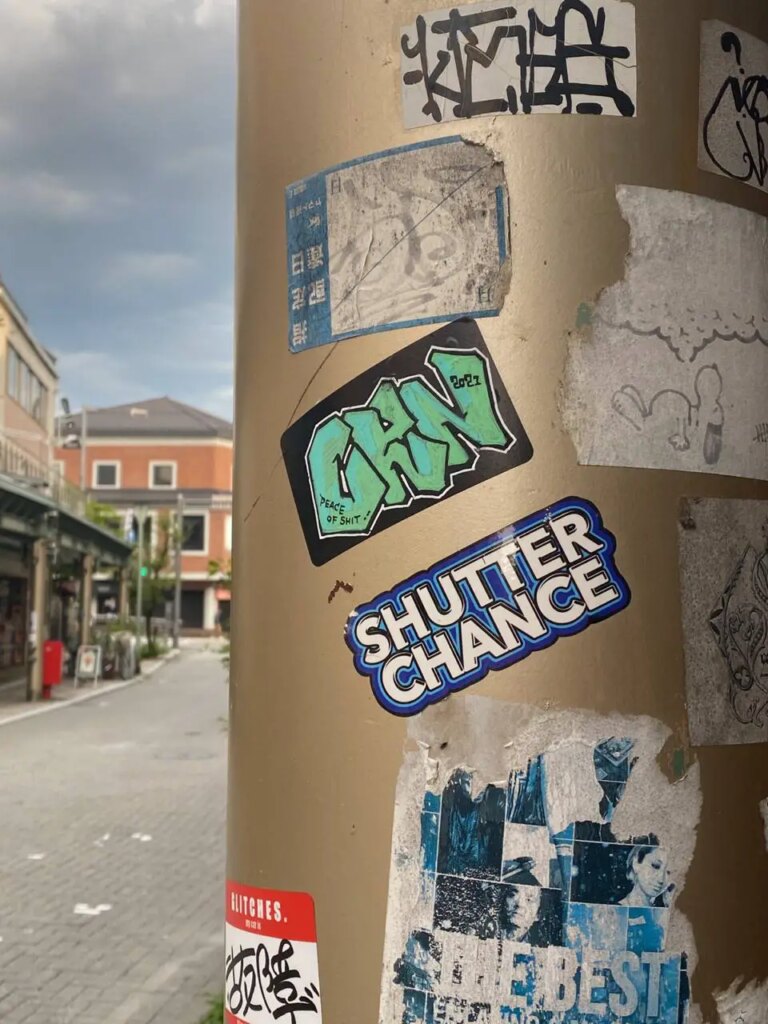
Russian: остранение (ostranenie)
The Russian word ostranenie originates from literary theory, but it also applies to photography and art in general. Coined by the Russian theorist Viktor Shklovsky, ostranenie is often translated as defamiliarisation or estrangement – the artistic technique of making the familiar seem strange or surprising, so that we may see things in a new light, as if for the first time.
Shklovsky argued that the force of familiarity and habit “eats away at things, at clothes, at furniture, at our wives, and at our fear of war.” Feelings are deadened, life becomes hollow and meaningless. “And so, in order to return sensation to our limbs, in order to make us feel objects, to make a stone feel stony, man has been given the tool of art.” Art can defamiliarise the familiar, make it strange, and thus heighten our perception of the world and our place in it.
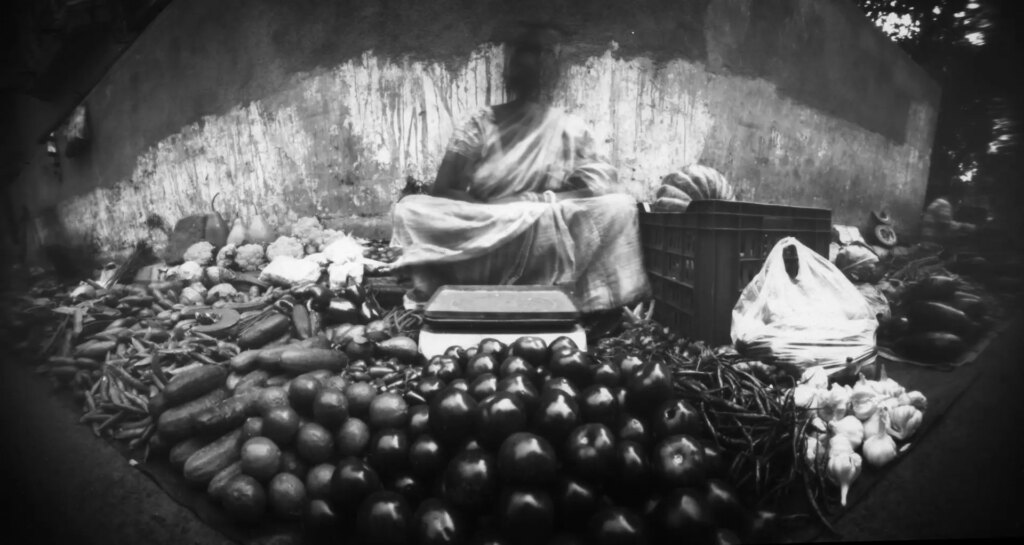
Photographs can evoke ostranenie in a variety of ways, and the history of the medium is replete with examples – from Edward Weston’s Pepper No. 30, to more recent examples like Nancy Rexroth’s evocation of Iowa, and Mo Yi’s I Am a Dog series. Defamiliarisation can be induced through “tricks” such as unusual camera angles, long exposures and manipulation. But a “straight” photograph can do that too, simply by virtue of what it chooses to focus on or exclude. A tight crop removes contextual clues, and a cheap corrugated plastic sheet looks like the sea from a fantasy world.
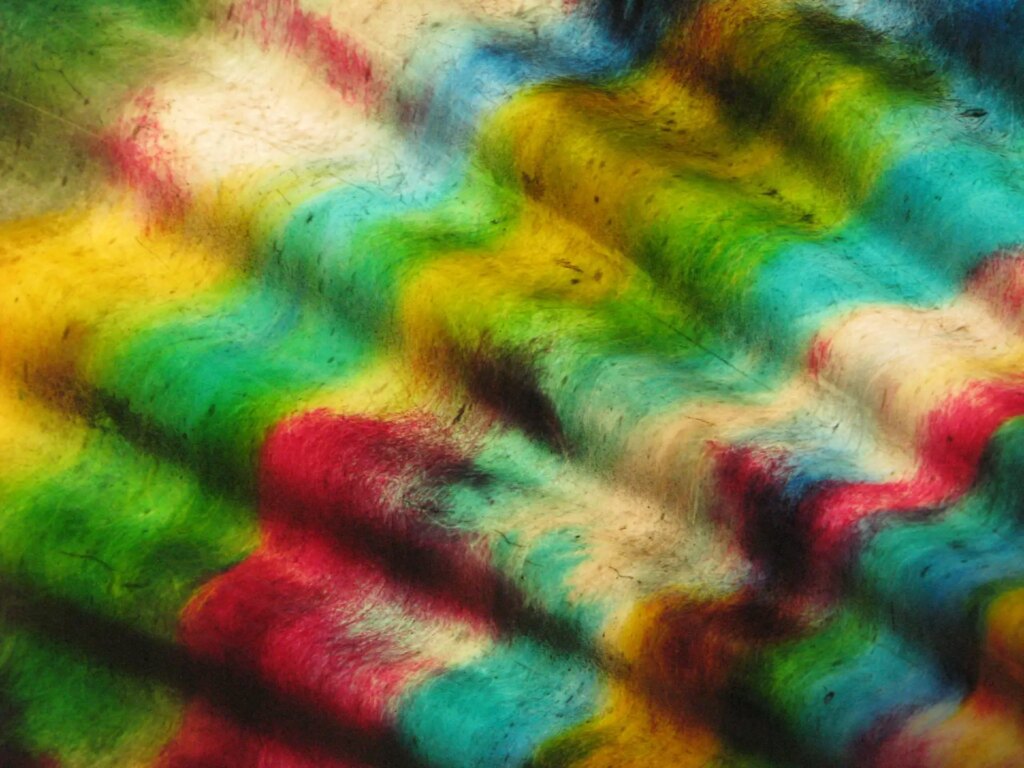
German: Renommierblende
After that rather heavy topic, now for something lighter. The German word renommierblende literally means “prestige aperture” – a playful term for a maximum aperture which sounds impressive, but is not really usable in practice. As in, “The lens is fine if you stop down, but f/0.95 is a renommierblende, not sharp at all.”
I don’t have a true renommierblende lens (the fastest lens I own is a Minolta 50mm which tops out at a modest f/1.7). But I do have a Mamiya 80mm f/1.9 – the fastest production lens ever made for a medium-format camera. In terms of image quality, it’s perfectly usable wide open. The bokeh can be a bit busy, but unlike, say, the Canon 50mm f/0.95 “dream lens”, the Mamiya is not too soft or glowy. Nevertheless, the depth of field is so shallow (equivalent to a 50mm f/1.2 on a full-frame sensor) that I often miss focus.
In the photo below of my friend Kai, I tried to focus on her left eye, but ended up back-focused. The film was defective too, with mottling from the backing paper. But Kai likes the photo, so it’s all good.
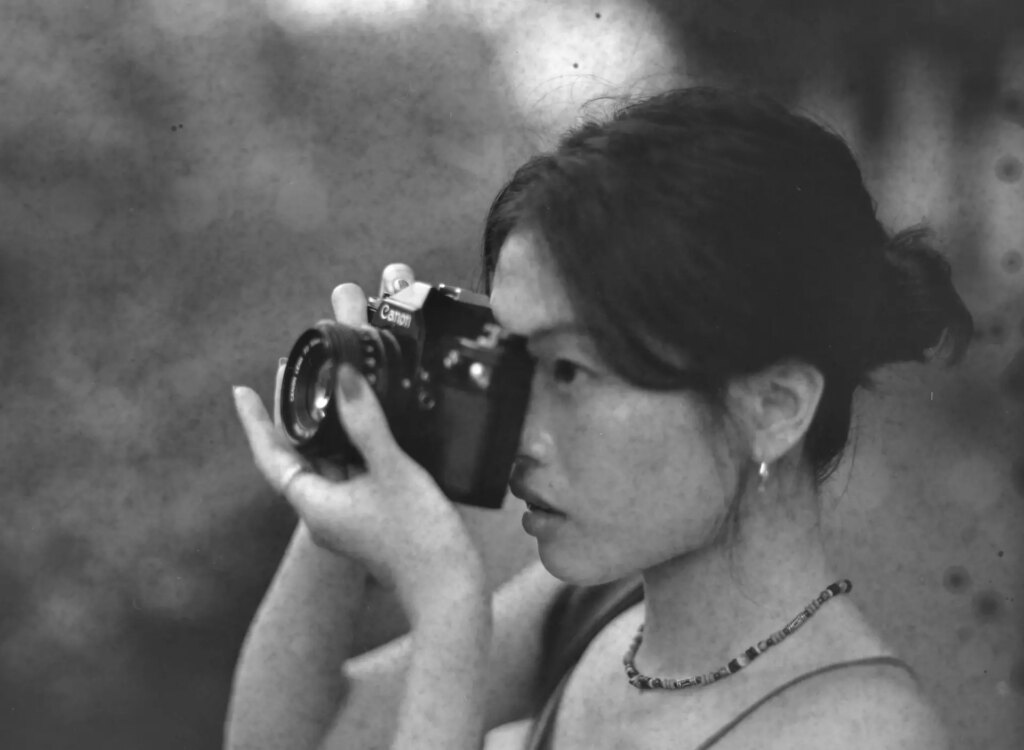
Mandarin: 照骗 (zhào piàn)
Zhào piàn literally means “photo cheat”, referring to the gap that often exists between the “real thing” and a beautified image – a beauty-filter selfie, for example, or an HDR landscape.
It’s also a clever pun. In Mandarin, a photograph is 照片 (zhàopiàn). For photo cheat, the second character 片 is replaced with 骗, which is also pronounced piàn, but means to deceive or cheat.
The phrase is not only used in a critical or accusatory way. I came across an example of a self-deprecating usage:
A: 你刚发的照片好好看。(The photos you just posted look so good.)
B: 照骗而已,照骗而已。(Just a photo cheat, just a photo cheat.)
Zhào piàn can be playful. In downtown Singapore, tourists pose for photos where they pretend they’re drinking from the Merlion fountain.
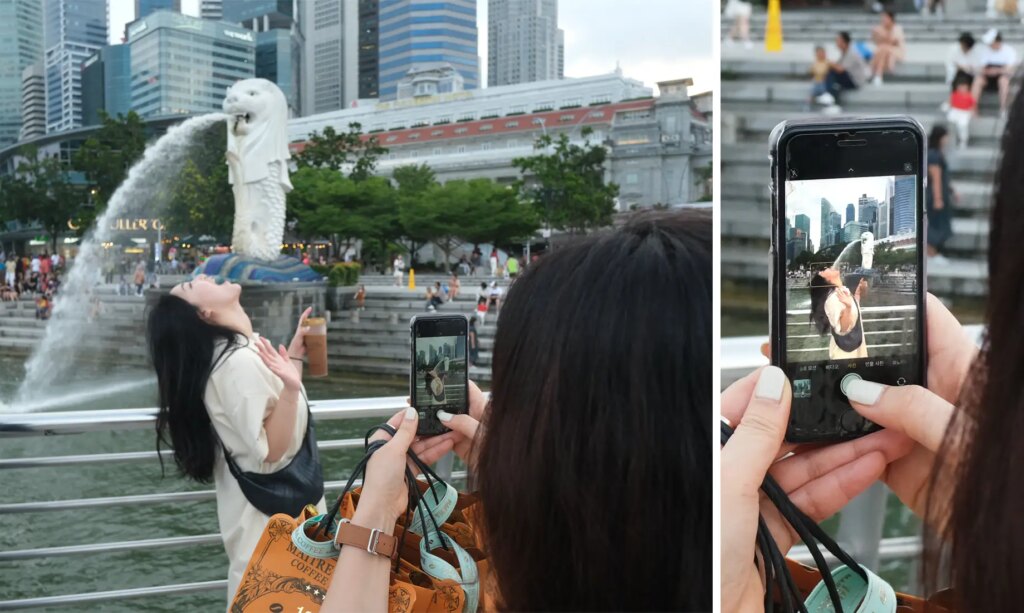
In a sense, zhào piàn is unavoidable. As Peter Galassi said, “Photography always transforms what it describes, even when it seems to be at its most transparent.” Consciously or unconsciously, zhào piàn creeps in before we even press the shutter. We choose what to include in the frame, but also what to exclude. Exposure settings determine if shadow detail will be retained or lost. Focal length and perspective affect the relative size of objects.
But even so, airbrushing a stray hair is not the same as manipulating a war photograph to push a false narrative. The standards for veracity depend on the subject matter and context. As Jörg Colberg wrote, “All of photography is a fiction, and there is absolutely no insight to be gained from going over this fact one more time. Instead, insight might arrive from looking at our relationship to that fiction, whether as viewers or photographers.”
Portuguese: revelação
Have you ever made a darkroom print? When you place silver-gelatine paper under an enlarger and project an image onto it, there’s no apparent change – the paper remains white. But then you place it in a chemical bath. Under the red glow of safelight, you gently rock the tray. There’s a short wait – ten seconds, perhaps. And the image floats up, as if by magic.
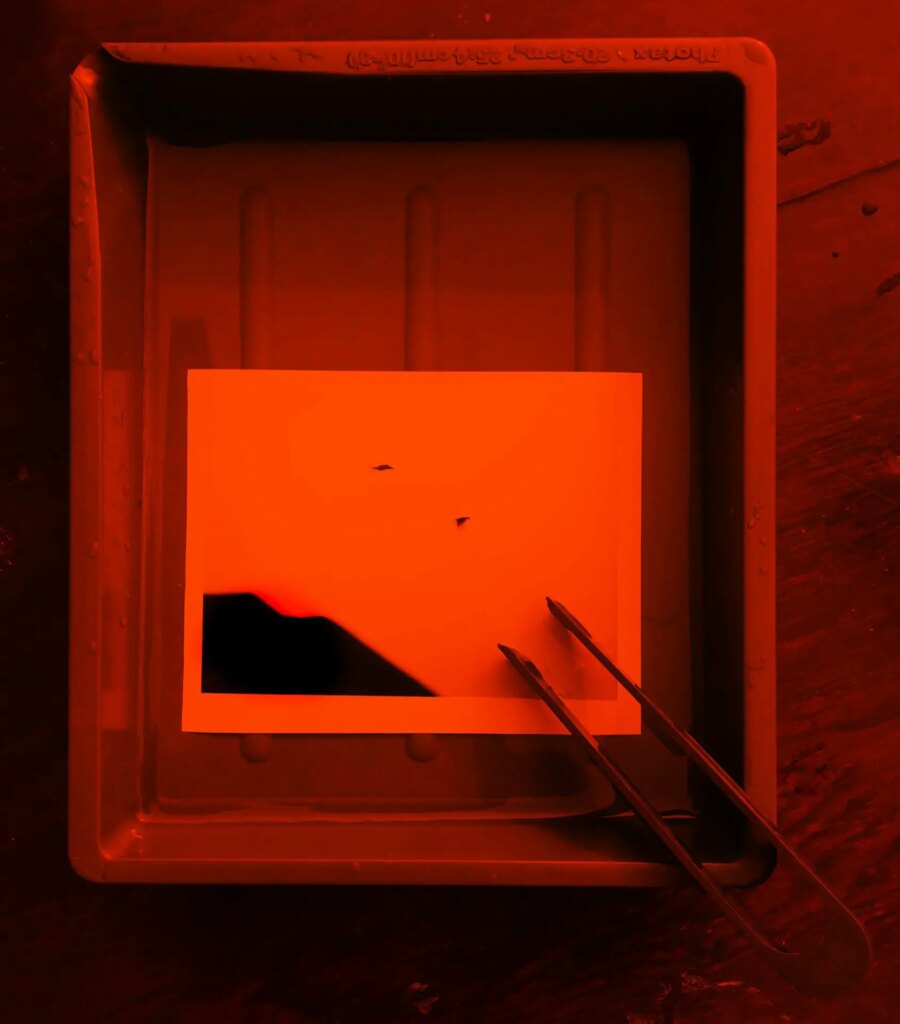
I’ve read so many interviews where a photographer says that’s how they first got hooked – seeing a print being developed in a darkroom. Alison Rossiter, for example: “I remember my first experience in a darkroom, of watching an image come up in a black-and-white developer tray, and it is astonishing.” Or Alfred Gescheidt: “When I saw that print come up in the developer, I said, ‘I have found my life’s work.’”
Indeed, developing is too mundane a word to describe this alchemy of silver and light. In Portuguese, to develop an image is to reveal: revelar. Better still is the noun form: revelação.
The literal English translation would be revelation, defined as “the making known of something that was previously secret or unknown”. Or even more dramatically, “the disclosure of divine or sacred reality or purpose to humanity,” as in The Revelation of St. John.
Revelação works on a literal level too – the developing agent reveals the latent image created by the action of light on a photosensitive emulsion. But I like the word because it has a whiff of the miraculous. If you’ve ever seen a darkroom print being made, or pulled freshly developed negatives from a tank, you know what I mean. It is, truly, a revelation.
And that brings us to the end of this short list. Did any of these terms resonate with you? Do you know any interesting photography-related words or phrases in other languages? Let us know in the comments!
For more of my work, feel free to check out my Instagram.
Share this post:
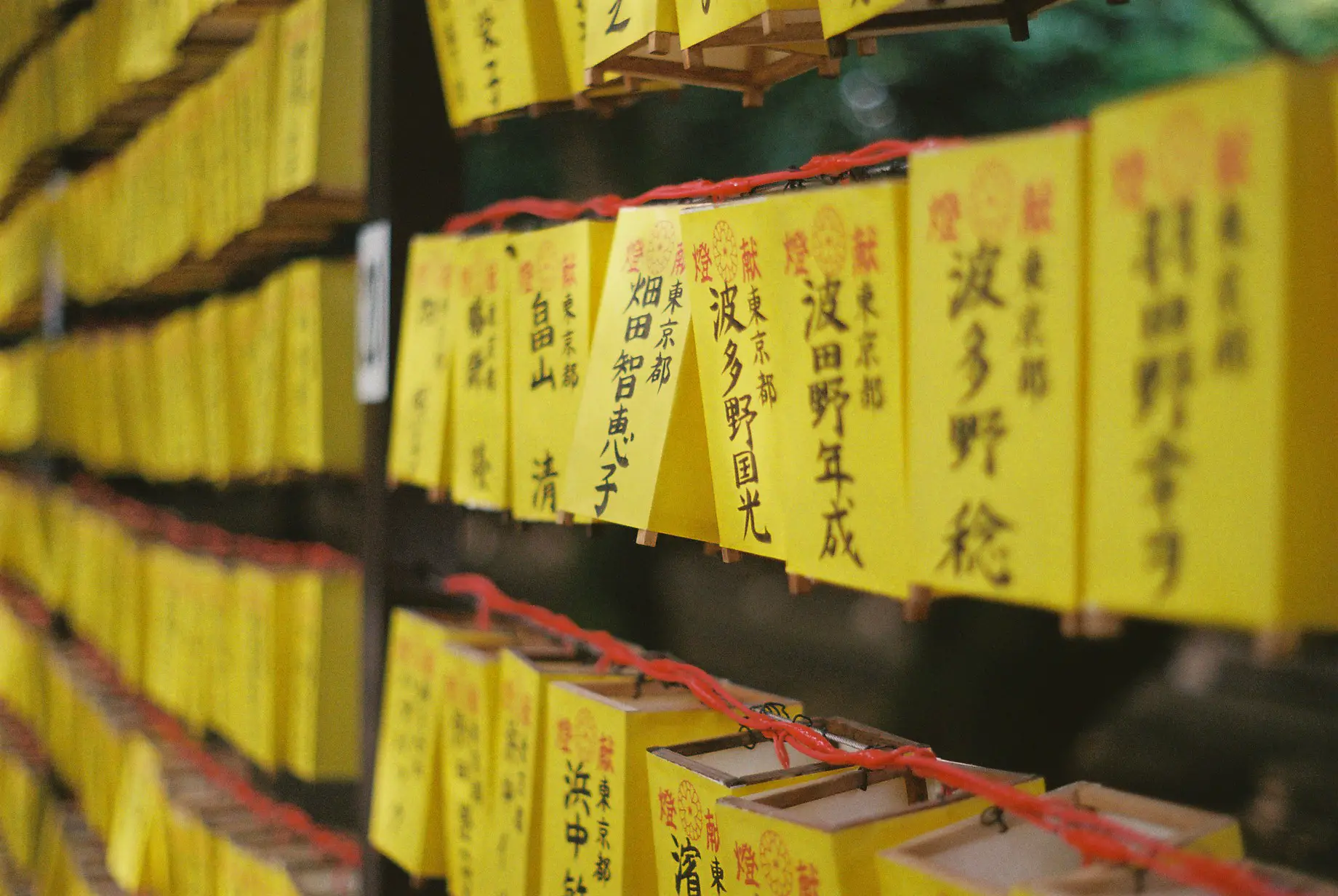








Comments
Michael J on Photography Words in Other Languages
Comment posted: 15/03/2023
Comment posted: 15/03/2023
Jayray on Photography Words in Other Languages
Comment posted: 15/03/2023
Comment posted: 15/03/2023
Comment posted: 15/03/2023
Ian Do Carmo on Photography Words in Other Languages
Comment posted: 16/03/2023
While the word 'revelação' does sound as beautiful as it is written, my suggestion for another Portuguese word related to photography is 'ângulo', translated as "angle," but the connotation for Portuguese speakers is that we do not "change our positions [to take photos]", we instead "choose a new angle", or "we like the angle of this photo/story" as well as we do like the angle that you brought in to this conversation. Thanks!
Comment posted: 16/03/2023